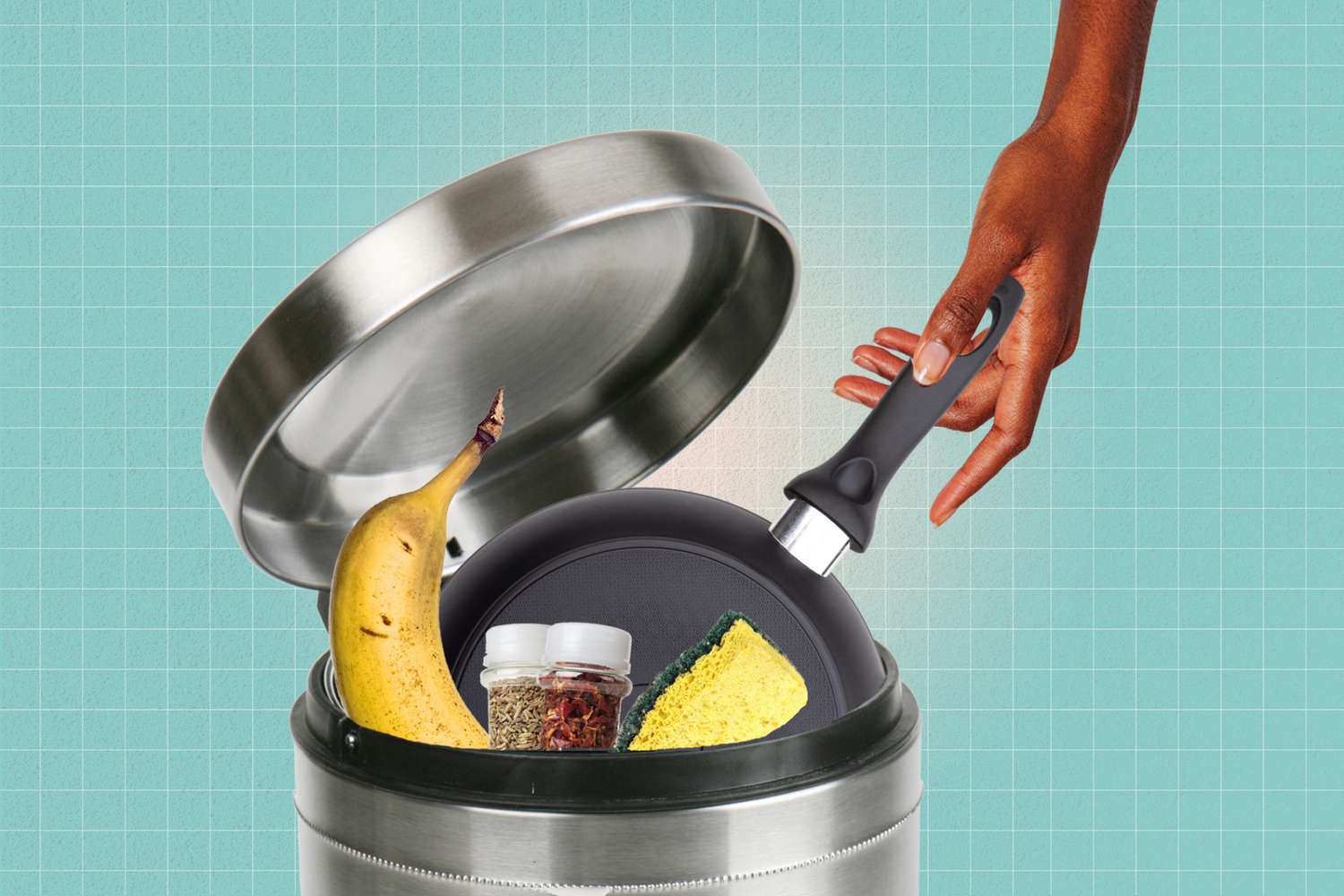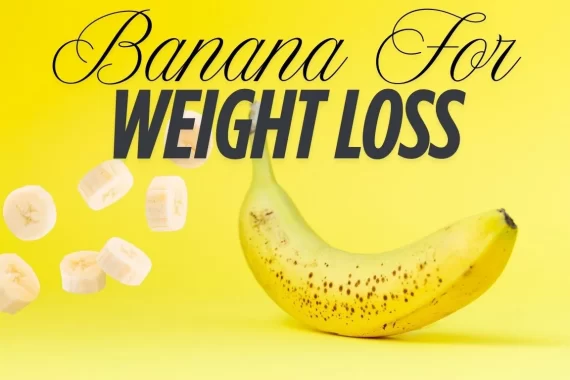
10 Things in Your Kitchen You Should Throw Away Before January 1
[ad_1]
The kitchen is the heart of every home. And since we spend so much time there, many items can get tucked away in drawers and cupboards and forgotten or believed to be lost. Or, we know that we have them—we just can’t find them among the clutter. This can create a lot of frustration when you’re in the middle of a recipe and can’t find what you need.
While spring cleaning is often equated to decluttering and reorganizing, you don’t have to wait until spring. We’ve talked to organizational experts and compiled a list of 10 things you can say goodbye to now.
Toss for Sanitary and Health Reasons
Old Sponges
A 2022 study in the Journal of Applied Microbiology found that used kitchen sponges harbored a plethora of various types of potentially harmful bacteria. It’s interesting to note that this study also found that after four weeks of use, there were no differences in the amount of bacteria present between conventional sponges and antimicrobial sponges. Also, brushes used to wash dishes tended to harbor fewer bacteria compared to the sponges (so it might be time to swap those sponges out with brushes!).
While you can extend the life of your kitchen sponge by boiling or microwaving it (note: never put a sponge with metal in the microwave), the USDA says there is no one foolproof method for ensuring your sponge won’t cross-contaminate hands, kitchen counters or food. Instead, they recommend replacing your kitchen sponge frequently. And if they develop any off-putting smell, it’s definitely time to toss them.
Worn-Out Cutting Boards
Keeping separate cutting boards—one for raw meat and seafood, and one for vegetables, bread and most anything else—is a safe practice to avoid cross-contamination. But, grooves appearing on a board over time are a sign of wear and tear that calls for disposal. According to the USDA, the grooves on a worn cutting board are difficult to clean thoroughly and may become breeding grounds for bacteria that could make you sick.
If you prefer wooden cutting boards, buy ones made of bamboo since they’re harder and less porous than other types of wooden cutting boards, states the USDA.
To keep your cutting boards clean between uses, you can place solid cutting boards into the dishwasher. Ones made with laminated wood should be hand-washed as the dishwasher will make them crack and split.
Old Utensils
Your partially chipped and cracked utensils may have been kitchen workhorses, but now they are a hazard. “Pieces of rubber can disintegrate into hot liquids or [chipped wood from your wooden spatula could] break off into a recipe,” says Sylvia Fountaine, professional chef, CEO and founder of Feasting at Home. “This can be a choking hazard, not to mention unpleasant!”
Like your worn-out cutting boards, the cracks and crevices in your aged utensils make them harder to clean and are places that may harbor bacteria. If you love a specific brand or type of utensil, consider buying a couple of duplicates and stowing them away for later use (as long as you don’t forget about them or where you put them!).
If you have any black plastic kitchen utensils, you may want to consider tossing them—even if they aren’t yet worn out. They may be made with recycled plastic from old electronics that contain fire retardants, which can leach into your food.
Toss to Organize and Declutter
Unused Appliances—and Their Instruction Booklets
Chances are, you’ve got some small kitchen appliances, tools and gadgets that have accumulated over time and are just taking up space. And while some can be excellent timesavers or solutions in certain situations, you may not need every single last one. Take an (honest) inventory and consider selling or donating any that you don’t use.
When disposing of or donating a kitchen appliance, include the instruction booklet with it. “Old instruction booklets for items you no longer own are clutter,” says Stacey Agin Murray, a professional organizer at Organized Artistry. “Even though they’re flat, they still take up precious space in your kitchen.”
Takeout Condiments, Straws and Cutlery
Takeout orders sometimes come with an overabundance of sauce packets, straws and cutlery. Tossing them into the trash may seem wasteful, but if you’re not going to use them, they just take up kitchen space and create clutter. The condiment packets may also lose their flavor and color over time if left unused.
Murray suggests purging them regularly to keep your collection manageable. Check their expiration dates and toss out those that have expired. If there’s no expiration date, throw out the ones that appear old and the ones that are unlikely to get used. The next time you place a takeout order, ask for only the ones you’ll use and opt out of the rest.
Kitchen Magnets
If you buy magnets as souvenirs when you travel or have a Rolodex of business card magnets stuck to your fridge—not to mention the artwork and notes they’re showcasing—you know how cluttered it can become. Consider rotating your favorite magnets and tossing the rest. Ditto on the refrigerator artwork. You’ll be amazed at how much “space” it creates in your kitchen!
Toss for Freshness
Old Spices
According to the USDA whole spices can last two to four years, while ground spices can last up to three years at room temperature. Even so, spices can lose much of their flavor and aroma and become stale over time. And while you can revive stale spices, there is a time and place to toss them—like after three or four years or if you have no idea when you bought them.
To avoid food waste, buy spices in small quantities. Better yet, purchase them from the grocery store’s bulk section so you can decide how much you need. Labeling your spices with the purchase date also helps keep track of their shelf life.
Coffee
If you’re a “My day doesn’t start until I’ve had coffee” type of person, there’s a good chance you have stockpiled coffee beans or ground coffee in your pantry. And while this is fine since whole-bean and freshly ground coffee can be stored for up to two weeks in a sealed container in a cool, dry, dark area, they will eventually become stale after opening.
“Coffee will [be used] much faster than other dry foods in your cupboard, so it is best to write the date of when you opened it on the container or bag, which will let you know whether your coffee will still be in date or not,” says Anna Silver, co-founder of Cook for Folks.
To reduce food waste, you can also recycle your stale coffee or used coffee grounds. Coffee intensifies the flavor of chocolate, so instead of throwing away your outdated coffee, brew some up and add it to your next batch of brownies or chocolate cake.
Cooking Oil
Cooking oils do not last as long as you think. They become stale, rancid and sour-tasting, and lose their aromatic qualities over time. While some cooking oils can last up to a year after opening, not all types do. For instance, a bottle of olive oil only lasts for a few months once it is opened, according to the North American Olive Oil Association. If you’re unsure how long a bottle of oil has been opened, toss it.
Freezer-Burned Food
Let’s not forget about your freezer—there may be frozen meats or meals back there in the darker recesses. And since freezer burn degrades food quality over time, free up space by tossing those items affected by the burn.
“Be sure to check expiration dates on the food you purchased,” advises Lauren Saltman, a professional organizer and owner of Living. Simplified. “If it’s food that you cooked or froze to be eaten at a later date, check for signs of freezer burn.”
It’s also a good idea when freezing leftovers to write the date it was packaged and placed into the freezer. While they might last indefinitely, as long as they’re kept frozen, the USDA recommends eating them within three to four months since they can lose moisture and flavor and become freezer-burned if left longer.
The Bottom Line
Whether your goal is to reduce food waste or to achieve a minimalist aesthetic, regularly decluttering your kitchen helps keep it clean and organized and maximizes your space. To start your kitchen organization project, Saltman suggests grouping or sorting items together. “This is a great way to get rid of or combine multiples of the same item,” she says. “And chances are, you don’t need to keep an item any longer if you haven’t used it for several months [or over the past year].”
[ad_2]
Source link

